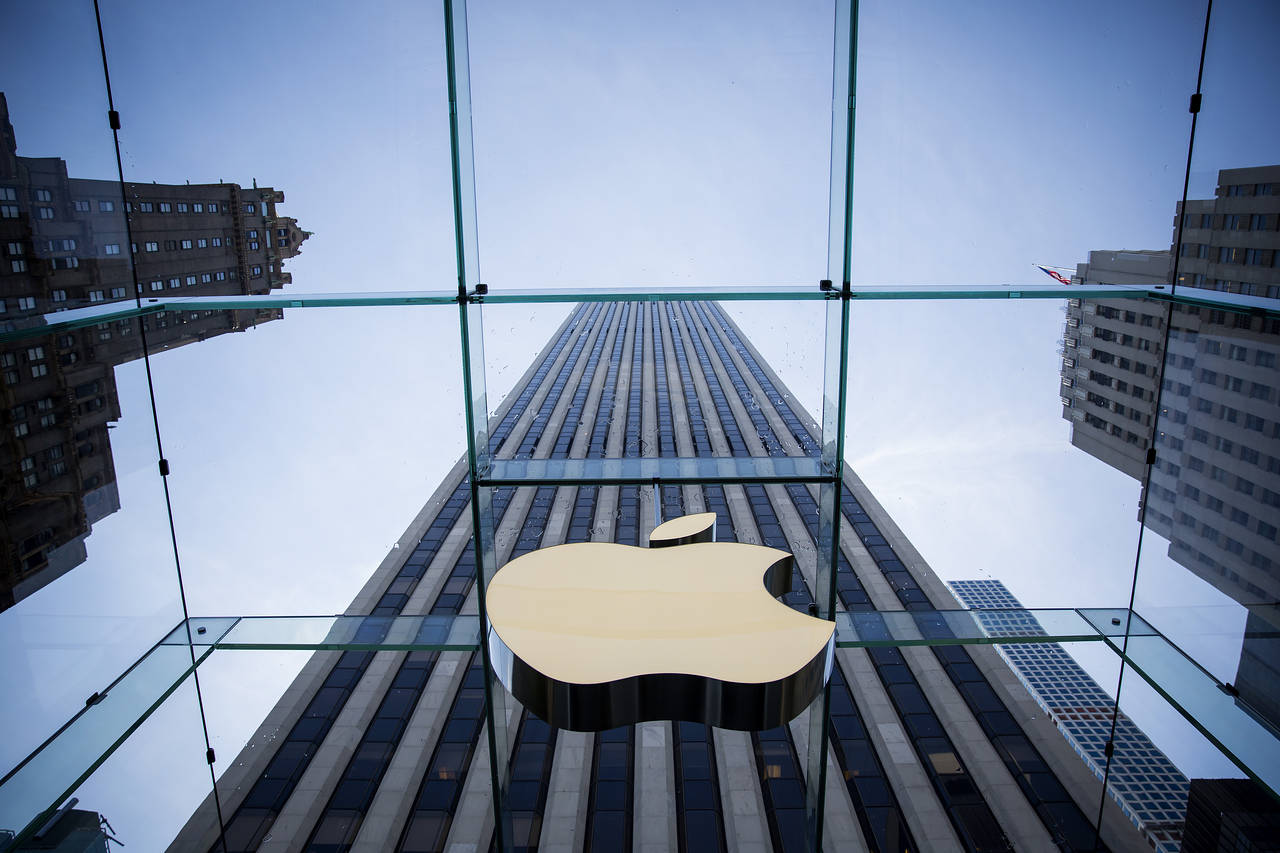Apple Sued by Employees Alleging Unequal Pay for Women
Lawsuit says company’s hiring and performance-review practices routinely slant toward men
Two female Apple employees filed a proposed class-action lawsuit Thursday alleging the company pays women lower salaries than men for similar work.
The suit, filed in a San Francisco state court, targets Apple’s hiring practices used to set compensation, as well as the company’s performance-review policies. It is the latest in a series of pay equity lawsuits against major corporations, including large tech giants, that allege they underpay women and minorities .
The lawsuit seeks to represent a class of 12,000 women employed at Apple across several departments who have worked there since 2020. The plaintiffs allege that the company is violating the California equal pay, employment and unfair business practice laws. The business practice law limits claims to a four-year period.
An Apple spokesman said the company has achieved and maintained gender pay equity since 2017. Apple works with an independent third-party expert to examine team members’ total compensation and makes adjustments where necessary, he said.
Google and Oracle settled similar claims in California in recent years, pushing similar arguments about pay policies for new hires. Google agreed to pay 15,500 women $118 million to settle its case in 2022 and Oracle agreed to pay $25 million for 4,000 female workers earlier this year. The companies didn’t admit wrongdoing.
One of the lead attorneys on those cases is also representing the plaintiffs against Apple.
Central to the new lawsuit is how Apple sets a new hire’s compensation. Before 2018, Apple asked applicants to provide their previous salaries to determine pay, the suit says.
When California passed a 2018 law that banned employers from considering prior pay to set compensation, Apple asked applicants about pay expectations instead, the suit says. The plaintiffs’ lawyers argue that the practice of asking about pay expectations perpetuates gender discrimination because women have historically been paid less than men.
“If you do pay women less, you can’t defend it by saying they were willing to take less money,” said James Finberg , one of the plaintiffs’ attorneys.
One of the plaintiffs, Justina Jong, said she discovered a male co-worker’s W2 left behind on a printer in Apple’s Sunnyvale, Calif., branch. Though she had the same responsibilities as her male co-worker, she saw his base salary in the tax filing was $10,000 more than what she made, she said. She discovered the discrepancy several years ago, about midway through her decade-plus career at Apple, where she held several roles in sales, training and marketing.
“I felt terrible and was shocked as well. I saw myself as a hardworking person, and collaborative, providing a lot of solutions for the team,” Jong said in an interview. “I thought to myself, ‘Maybe if I work harder, they will see that I’m worth just as much or more.’”
The lawsuit alleges that when Apple hired Jong in 2013, it paid her the same base salary she earned at her previous job. In the years following, the company never gave her the kind of raise that put her on equal footing with her male peers, the suit says.
Jong said it took her years to decide to challenge the discrepancy and sign onto the lawsuit. She said she was spurred by stories about unequal pay from other women at the company.
During the Covid-19 pandemic, Apple faced a rise in employee activism. Apple workers organized to form a group called Apple Too to mirror the #MeToo movement, which gathered stories of discrimination and pushed the company to change its pay practices. The movement led to some retail stores forming unions.
“At Apple we are deeply committed to inclusion and we have a longstanding commitment to pay equity, which is embedded in our approach to compensating our valued team members,” a spokesman for Apple said.
The other named plaintiff, Amina Salgado, has worked at Apple since 2012 in various roles, including as a manager in the AppleCare division in the company’s office near Sacramento. She discovered she was paid less than men in similar roles, and she complained several times about the discrepancy, according to the lawsuit. Apple hired a third party to investigate, and after the report concluded she was right, the company increased her pay. She didn’t get back pay, the lawsuit says.
The suit also claims that Apple uses biased criteria in its performance-review system. Men routinely receive higher ratings for the discretionary categories of leadership and teamwork, leading to better reviews for men, the plaintiffs’ lawyers argue.
 Copyright 2020, Dow Jones & Company, Inc. All Rights Reserved Worldwide. LEARN MORE
Copyright 2020, Dow Jones & Company, Inc. All Rights Reserved Worldwide. LEARN MORE
This stylish family home combines a classic palette and finishes with a flexible floorplan
Just 55 minutes from Sydney, make this your creative getaway located in the majestic Hawkesbury region.
Impact investing is becoming more mainstream as larger, institutional asset owners drive more money into the sector, according to the nonprofit Global Impact Investing Network in New York.
In the GIIN’s State of the Market 2024 report, published late last month, researchers found that assets allocated to impact-investing strategies by repeat survey responders grew by a compound annual growth rate (CAGR) of 14% over the last five years.
These 71 responders to both the 2019 and 2024 surveys saw their total impact assets under management grow to US$249 billion this year from US$129 billion five years ago.
Medium- and large-size investors were largely responsible for the strong impact returns: Medium-size investors posted a median CAGR of 11% a year over the five-year period, and large-size investors posted a median CAGR of 14% a year.
Interestingly, the CAGR of assets held by small investors dropped by a median of 14% a year.
“When we drill down behind the compound annual growth of the assets that are being allocated to impact investing, it’s largely those larger investors that are actually driving it,” says Dean Hand, the GIIN’s chief research officer.
Overall, the GIIN surveyed 305 investors with a combined US$490 billion under management from 39 countries. Nearly three-quarters of the responders were investment managers, while 10% were foundations, and 3% were family offices. Development finance institutions, institutional asset owners, and companies represented most of the rest.
The majority of impact strategies are executed through private-equity, but public debt and equity have been the fastest-growing asset classes over the past five years, the report said. Public debt is growing at a CAGR of 32%, and public equity is growing at a CAGR of 19%. That compares to a CAGR of 17% for private equity and 7% for private debt.
According to the GIIN, the rise in public impact assets is being driven by larger investors, likely institutions.
Private equity has traditionally served as an ideal way to execute impact strategies, as it allows investors to select vehicles specifically designed to create a positive social or environmental impact by, for example, providing loans to smallholder farmers in Africa or by supporting fledging renewable energy technologies.
Future Returns: Preqin expects managers to rely on family offices, private banks, and individual investors for growth in the next six years
But today, institutional investors are looking across their portfolios—encompassing both private and public assets—to achieve their impact goals.
“Institutional asset owners are saying, ‘In the interests of our ultimate beneficiaries, we probably need to start driving these strategies across our assets,’” Hand says. Instead of carving out a dedicated impact strategy, these investors are taking “a holistic portfolio approach.”
An institutional manager may want to address issues such as climate change, healthcare costs, and local economic growth so it can support a better quality of life for its beneficiaries.
To achieve these goals, the manager could invest across a range of private debt, private equity, and real estate.
But the public markets offer opportunities, too. Using public debt, a manager could, for example, invest in green bonds, regional bank bonds, or healthcare social bonds. In public equity, it could invest in green-power storage technologies, minority-focused real-estate trusts, and in pharmaceutical and medical-care company stocks with the aim of influencing them to lower the costs of care, according to an example the GIIN lays out in a separate report on institutional strategies.
Influencing companies to act in the best interests of society and the environment is increasingly being done through such shareholder advocacy, either directly through ownership in individual stocks or through fund vehicles.
“They’re trying to move their portfolio companies to actually solving some of the challenges that exist,” Hand says.
Although the rate of growth in public strategies for impact is brisk, among survey respondents investments in public debt totaled only 12% of assets and just 7% in public equity. Private equity, however, grabs 43% of these investors’ assets.
Within private equity, Hand also discerns more evidence of maturity in the impact sector. That’s because more impact-oriented asset owners invest in mature and growth-stage companies, which are favored by larger asset owners that have more substantial assets to put to work.
The GIIN State of the Market report also found that impact asset owners are largely happy with both the financial performance and impact results of their holdings.
About three-quarters of those surveyed were seeking risk-adjusted, market-rate returns, although foundations were an exception as 68% sought below-market returns, the report said. Overall, 86% reported their investments were performing in line or above their expectations—even when their targets were not met—and 90% said the same for their impact returns.
Private-equity posted the strongest results, returning 17% on average, although that was less than the 19% targeted return. By contrast, public equity returned 11%, above a 10% target.
The fact some asset classes over performed and others underperformed, shows that “normal economic forces are at play in the market,” Hand says.
Although investors are satisfied with their impact performance, they are still dealing with a fragmented approach for measuring it, the report said. “Despite this, over two-thirds of investors are incorporating impact criteria into their investment governance documents, signalling a significant shift toward formalising impact considerations in decision-making processes,” it said.
Also, more investors are getting third-party verification of their results, which strengthens their accountability in the market.
“The satisfaction with performance is nice to see,” Hand says. “But we do need to see more about what’s happening in terms of investors being able to actually track both the impact performance in real terms as well as the financial performance in real terms.”
This stylish family home combines a classic palette and finishes with a flexible floorplan
Just 55 minutes from Sydney, make this your creative getaway located in the majestic Hawkesbury region.






















